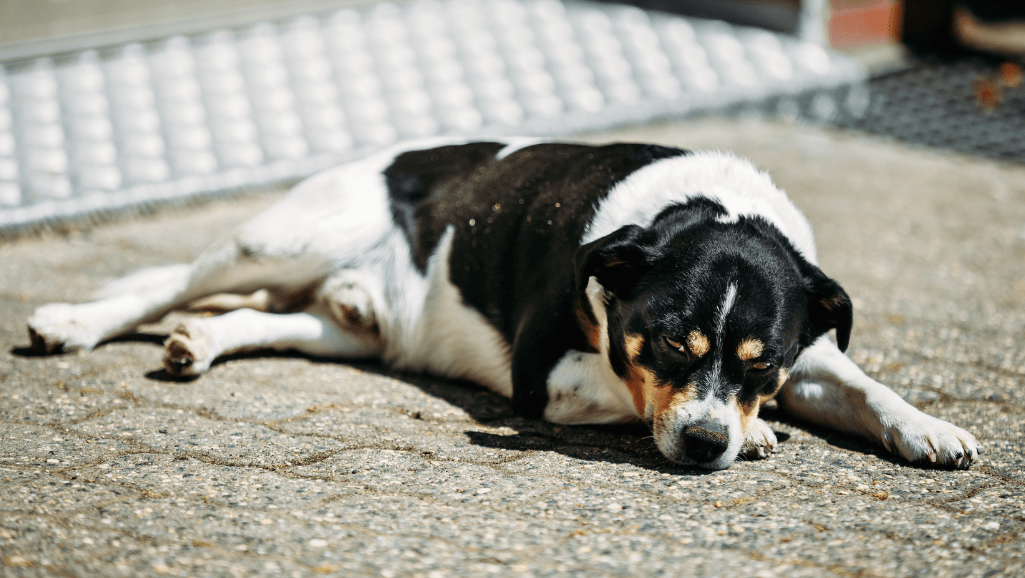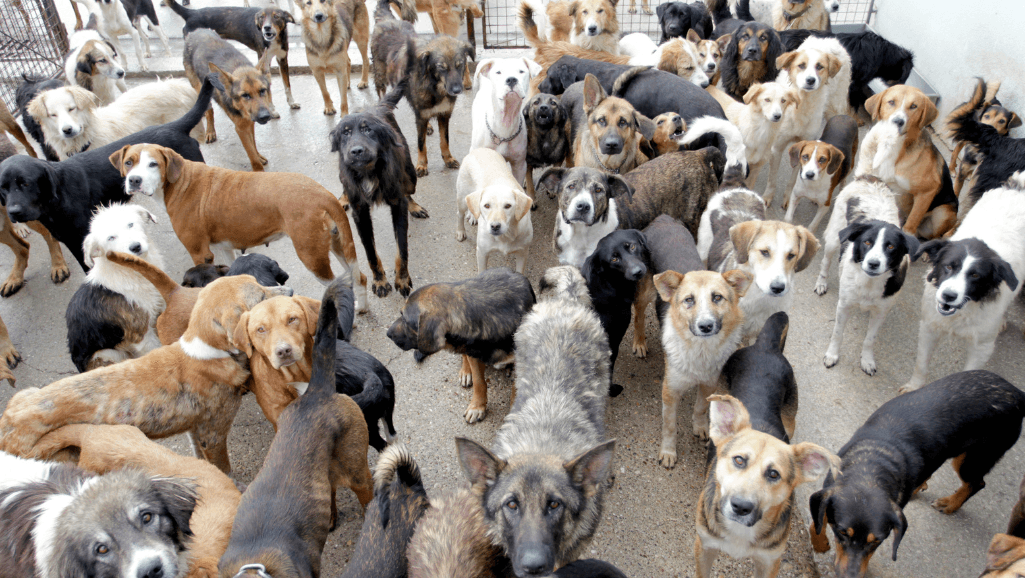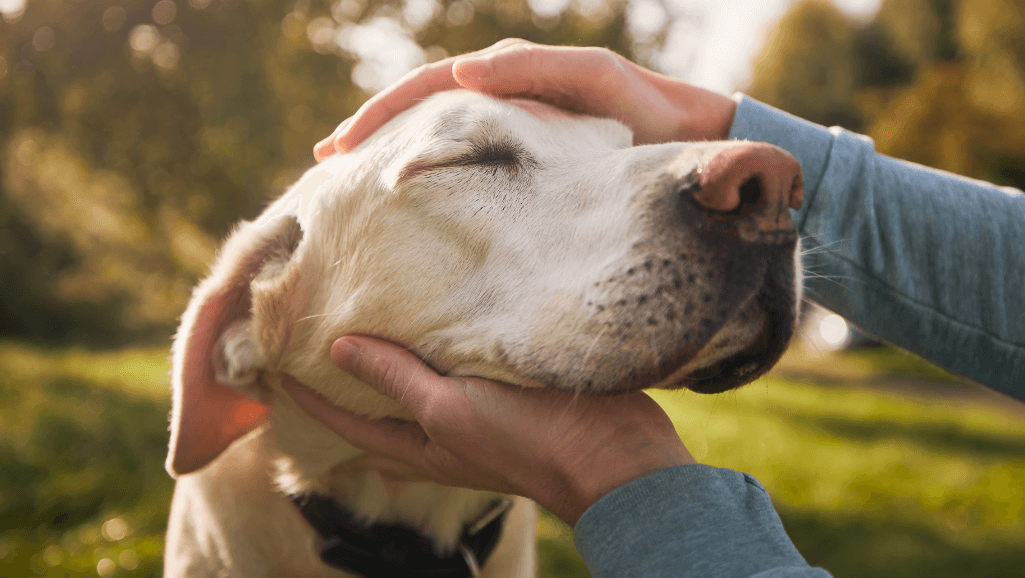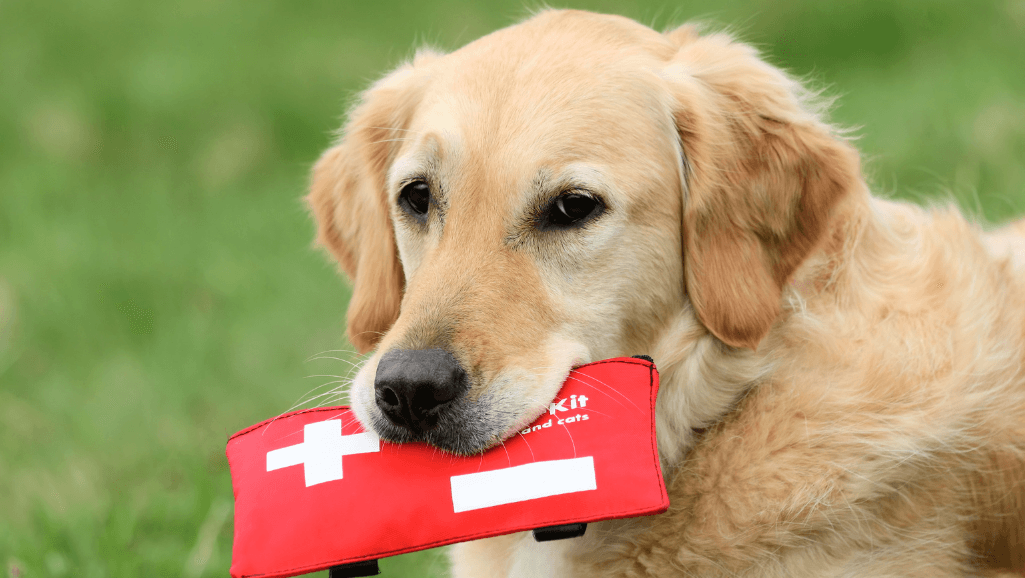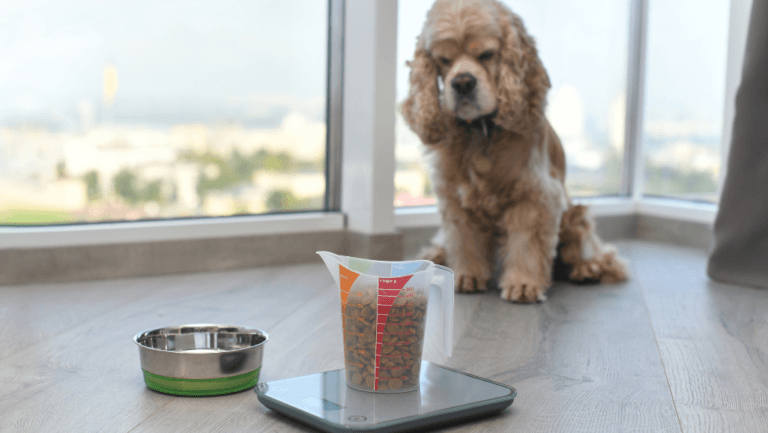As the temperature rises during the summer months, it’s important to be mindful of our furry friends who are prone to heat exhaustion and heat stroke. Dogs are more susceptible to overheating because they can only cool down by panting and sweating through their paw pads. As responsible dog owners, we must take precautions to protect our pets from the dangers of summer heat.
Key Takeaways:
- Preventing Summer Heat Exhaustion in Dogs.
- Summer heat can lead to heat exhaustion and heat stroke in dogs.
- Dogs cool down by panting and sweating through their paw pads.
- Preventing heat stroke in dogs involves avoiding enclosed and poorly ventilated areas, providing shade and water, and avoiding strenuous exercise in hot weather.
- Recognizing the signs of heat stroke is crucial for early intervention.
- Breeds with short noses and flat faces, overweight dogs, and those with pre-existing conditions are at higher risk of heat stroke.
Signs and Symptoms of Heat Stroke in Dogs
Recognizing the signs and symptoms of heat stroke in dogs is crucial for early intervention. By being aware of these indicators, you can take immediate action to help your furry friend. Some common signs of heat stroke in dogs include:
- Red gums: Check your dog’s gums for a bright red color, which can indicate overheating.
- Excessive panting: Dogs regulate their body temperature through panting, but if it becomes excessive, it may be a sign of heat stroke.
- Distressed behavior: Your dog may appear restless, anxious, or unable to settle down due to the discomfort caused by heat exhaustion.
- Increased heart rate: Observe your dog’s heart rate. If it is elevated and beats faster than usual, it may be a sign of heat stroke.
- Increased salivation: Heat stroke can cause excessive drooling or foaming at the mouth.
- Seizures: In severe cases of heat stroke, dogs may experience seizures or collapse.
If you notice any of these symptoms in your dog, it is vital to act promptly. Contact your veterinarian immediately for guidance and professional assistance. While waiting for veterinary help, there are some first aid measures you can take:
- Move your dog to a cool area: Transport them to a shaded or air-conditioned space where their body temperature can begin to reduce.
- Apply cold, wet towels or sheets: Dampen towels or sheets with cool (not icy) water and place them on your dog’s body to help lower their temperature.
- Allow them to drink small amounts of water: Offer cool water to your dog in small quantities to help them rehydrate.
Remember, these first aid measures are temporary solutions, and professional veterinary care is crucial for your dog’s well-being. Do not delay in seeking medical assistance when dealing with heat stroke.
Understanding Heat Stroke vs. Heat Exhaustion
When it comes to heat-related conditions in dogs, it’s essential to understand the difference between heat stroke and heat exhaustion. While both are serious and require immediate attention, there are distinct characteristics that set them apart.
Heat exhaustion occurs when a dog’s body temperature rises above 103°F (39.4°C). It typically happens when dogs are exposed to high temperatures and excessive physical activity without proper rest and hydration. In heat exhaustion, the body struggles to regulate its temperature, leading to discomfort and potential complications.
Heat stroke, on the other hand, is a more severe condition and can be life-threatening if left untreated. It occurs when a dog’s body temperature reaches dangerous levels, often above 106°F (41.1°C). In heat stroke, the dog’s internal organs may stop functioning correctly, and immediate veterinary attention is crucial to prevent further damage.
Why Early Recognition is Important
Recognizing the signs of heat stroke in dogs early on can make a significant difference in your dog’s recovery. Immediate intervention can help prevent further complications and potentially save their life. Heat stroke is a serious condition that requires prompt medical attention, so it’s essential to stay vigilant and act quickly in hot weather.
Heat Stroke vs. Heat Exhaustion: Key Differences
To help you understand the variances between heat stroke and heat exhaustion, let’s compare some of the key characteristics:
| Characteristic | Heat Exhaustion | Heat Stroke |
|---|---|---|
| Body Temperature | Usually above 103°F (39.4°C) | Often above 106°F (41.1°C) |
| Severity | Less severe | Life-threatening |
| Organ Function | No imminent danger to internal organs | Potential dysfunction or failure of internal organs |
| Treatment | Immediate veterinary attention | Immediate veterinary attention |
As seen in the table above, heat stroke is a more severe condition that poses a higher risk to a dog’s well-being. However, both heat stroke and heat exhaustion warrant immediate veterinary attention to prevent further complications.
Risk Factors for Heat Stroke in Dogs
While all dogs are at risk of heat stroke, certain factors can increase their susceptibility. It’s important for dog owners to be aware of these risk factors to better protect their furry friends.
Breeds Prone to Heat Stroke
Some dog breeds are more prone to heat stroke due to their physiological characteristics. Breeds with short noses and flat faces, also known as brachycephalic breeds, have a higher risk of heat stroke. These breeds include Bulldogs, Pugs, Boxers, and Shih Tzus, among others.
Factors that Increase Heat Stroke Risk
In addition to breed, other factors can increase a dog’s risk of developing heat stroke:
- Overweight dogs: Excess weight can impair a dog’s ability to regulate their body temperature.
- Thick fur coats: Dogs with dense or heavy coats may struggle to cool down effectively.
- Very young or old dogs: Puppies and senior dogs have a harder time regulating their body temperature.
- Pre-existing health conditions: Dogs with underlying health issues, such as heart or lung problems, are more susceptible to heat stroke.
Preventing Heat Stroke in At-Risk Dogs
If you have a dog that is at a higher risk of heat stroke, there are additional steps you can take to prevent heat-related emergencies:
- Limit outdoor activities during the hottest parts of the day.
- Provide access to shade in outdoor areas.
- Ensure fresh and cool water is available at all times.
- Keep indoor spaces well-ventilated and comfortably cool.
- Consider using cooling mats or vests to help regulate your dog’s body temperature.
Taking these precautions can greatly reduce the risk of heat stroke and help keep your dog safe and comfortable during hot weather.
| Breeds Prone to Heat Stroke | Risk Factors |
|---|---|
| Bulldogs | Overweight |
| Pugs | Thick fur coats |
| Boxers | Very young or old |
| Shih Tzus | Pre-existing health conditions |
Tips for Preventing Heat Stroke in Dogs
Preventing heat stroke in dogs is crucial during hot summer months. By taking proactive measures, you can ensure the well-being and comfort of your furry friend. Here are some helpful tips to keep your dogs cool and safe:
- Provide access to cool water: Make sure your dog has access to fresh and cool water at all times. Keeping them hydrated is essential in preventing heat stroke.
- Ensure adequate shade: Create shaded areas in your outdoor spaces where your dog can retreat from the direct sun. This will help them stay cool and avoid overheating.
- Use soaked towels: On particularly hot days, soak towels in cold water and place them on your dog’s body to help cool them down. This can provide instant relief from the heat.
- Avoid exercise during peak heat: Schedule your dog’s exercise routine during cooler parts of the day, such as early morning or late evening. This reduces the risk of heat stroke during intense physical activity.
- Be mindful of susceptible breeds: Certain dog breeds are more prone to heat stroke due to their physical characteristics. Breeds with short noses and flat faces, such as Bulldogs and Pugs, are at higher risk. Take extra precautions with these breeds to prevent heat-related illnesses.
By implementing these preventive measures, you can help mitigate the risk of heat stroke in dogs and ensure their safety and well-being during the summer months.
Heat Stroke Prevention Tips
| Tips | Description |
|---|---|
| Provide access to cool water | Ensure your dog has constant access to fresh and cool water to stay hydrated. |
| Ensure adequate shade | Create shaded areas in your outdoor spaces where your dog can seek refuge from the sun. |
| Use soaked towels | On hot days, use towels soaked in cold water to help cool your dog down. |
| Avoid exercise during peak heat | Schedule exercise routines during the cooler parts of the day to prevent overheating. |
| Be mindful of susceptible breeds | Take extra precautions with breeds prone to heat stroke, such as Bulldogs and Pugs. |
By incorporating these tips into your routine, you can ensure your dog stays cool and protected from heat stroke during the summer. Remember, prevention is key when it comes to your furry friend’s well-being!
Immediate Actions for Heat Stroke in Dogs
If you suspect your dog is experiencing heat stroke, taking immediate action is essential to ensure their well-being. Here are the steps you should follow:
- Move them to a cool area: Immediately relocate your dog to a shaded or air-conditioned space to prevent further overheating.
- Offer small sips of water: Provide your dog with small amounts of cool water to help hydrate them.
- Apply cool towels or use evaporative cooling methods: Soak towels in cool water and apply them to your dog’s body to help lower their body temperature. Alternatively, you can use evaporative cooling methods such as a cooling vest or mat.
While these initial measures can be helpful, it’s crucial to contact your veterinarian for further guidance and professional assistance. Heat stroke in dogs can have serious consequences, and veterinary intervention is necessary to ensure your dog receives the appropriate care.
Symptoms of Heat Stroke in Dogs
| Symptoms | Description |
|---|---|
| Excessive panting | Rapid or excessive panting beyond normal heat regulation |
| Red or pale gums | Discoloration of gums indicating compromised circulation |
| Distressed behavior | Restlessness, agitation, or disorientation |
| Increased heart rate | Elevated heart rate above normal resting levels |
| Increased salivation | Excessive drooling or foaming at the mouth |
| Seizures | Uncontrolled muscle contractions or convulsions |
Conclusion
Preventing summer heat exhaustion in dogs is crucial for their well-being. By being proactive and taking the necessary precautions, you can ensure that your furry friend stays safe and comfortable during the hot months. Make sure your dog has access to shade and plenty of water at all times. Avoid engaging in strenuous activities during the hottest parts of the day. And always keep a close eye out for the signs of heat stroke.
Remember, dogs rely on us to keep them cool and protected from the heat. It’s our responsibility as pet owners to prioritize their safety. By following these tips and being aware of the risks, you can prevent summer heat exhaustion in dogs and enjoy a happy and healthy summer together.
So, as the temperature rises, keep these guidelines in mind and take the necessary steps to protect your canine companion. With your love, care, and attention, you can ensure that your dog stays cool, comfortable, and free from the dangers of heat stroke. Stay cool and have a fantastic summer!

